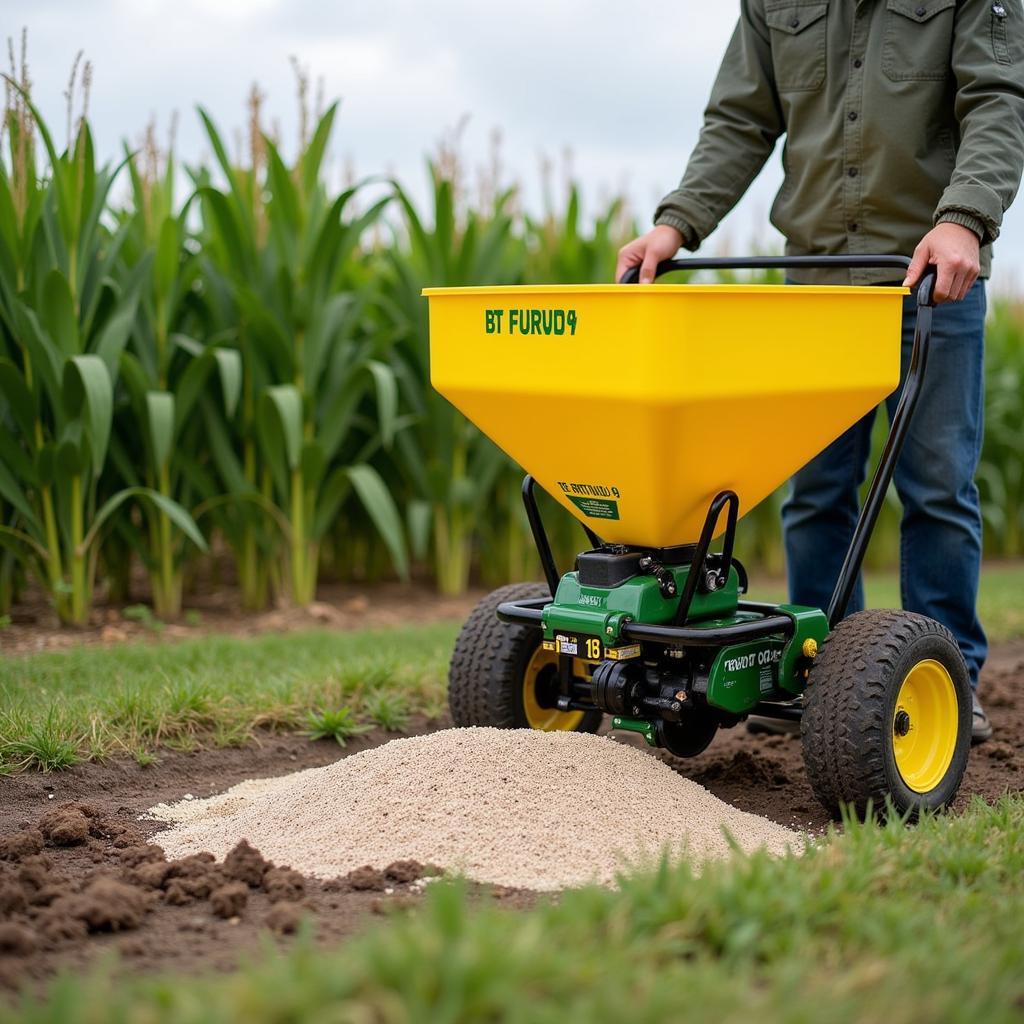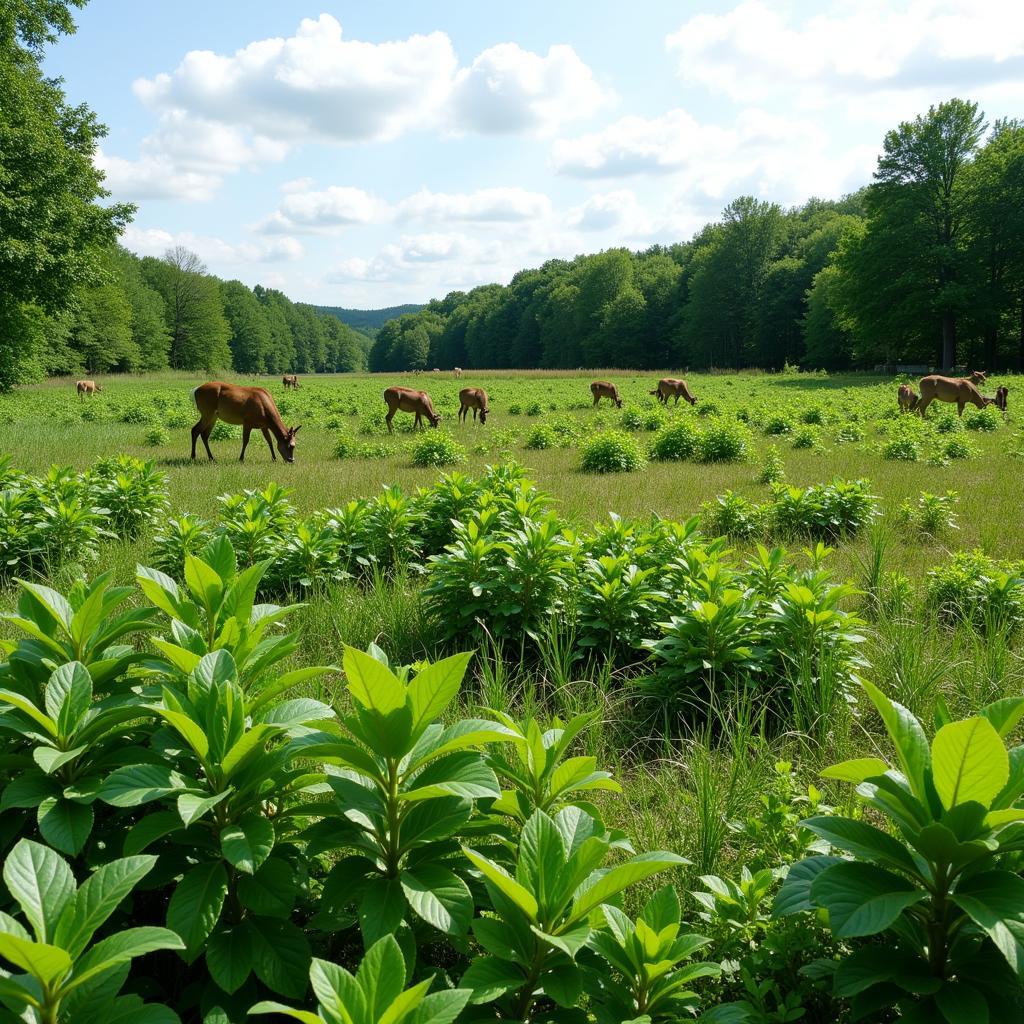19-19-19 fertilizer is a popular choice for food plots, offering a balanced nutrient blend that can boost the growth of various plants. Understanding how and when to use this fertilizer is crucial for achieving a thriving food plot that attracts wildlife. This article dives deep into the benefits, application methods, and considerations for using 19-19-19 fertilizer to help you maximize your food plot success.
Choosing the right fertilizer for your food plot is a critical step in ensuring its success. Many hunters and land managers turn to 19-19-19 due to its balanced nutrient ratio, making it a versatile option for various plant types. But what exactly does 19-19-19 mean, and how can you leverage its potential? This comprehensive guide will explore everything you need to know about utilizing 19-19-19 fertilizer for a flourishing food plot. See our other articles about deer food plots for spring for more specific planting advice.
Understanding 19-19-19 Fertilizer
The numbers 19-19-19 represent the percentage by weight of nitrogen (N), phosphorus (P), and potassium (K) in the fertilizer. This equal ratio makes it an excellent choice for promoting overall plant growth, from foliage development to root establishment. Nitrogen fuels leafy green growth, phosphorus supports root development and flowering, and potassium contributes to overall plant health and disease resistance.
Why Choose 19-19-19 for Food Plots?
This balanced blend is ideal for establishing new food plots, as it provides the necessary nutrients for seedlings to take root and flourish. It’s also beneficial for revitalizing existing plots that may be nutrient-deficient. The versatility of 19-19-19 makes it suitable for a wide range of food plot species, including clover, alfalfa, and various grasses.
Applying 19-19-19 Fertilizer Effectively
Proper application is key to maximizing the benefits of 19-19-19 fertilizer. Over-application can lead to nutrient burn and environmental issues, while under-application can limit plant growth. Follow these guidelines for effective application:
- Soil Testing: Before applying any fertilizer, conduct a soil test to determine the existing nutrient levels and pH. This helps you tailor your application to the specific needs of your plot.
- Application Rate: Follow the manufacturer’s recommended application rate, which is usually provided on the fertilizer packaging.
- Application Method: 19-19-19 can be applied by broadcasting, banding, or using a fertilizer spreader. Choose the method most appropriate for your plot size and equipment.
- Timing: The best time to apply 19-19-19 is typically during the planting stage or early growth phase of your food plot species.
When to Apply 19-19-19?
Generally, early spring or fall is the optimal time for application, as these periods coincide with major growth spurts for many food plot plants. However, specific timing can vary depending on the plant species and your local climate. Check out our article on deer food plots for spring and summer to learn more about seasonal planting strategies.
 Fertilizer Spreader in Action
Fertilizer Spreader in Action
Considerations for Using 19-19-19
While 19-19-19 is a versatile and effective fertilizer, there are some important considerations:
- Environmental Impact: Excessive nitrogen and phosphorus can leach into waterways, causing pollution. Apply fertilizer responsibly and avoid over-application.
- Plant Sensitivity: Some plants may be sensitive to high salt concentrations in certain 19-19-19 formulations. Choose a formulation appropriate for your chosen plant species.
- Storage: Store fertilizer in a cool, dry place away from children and pets.
“A healthy soil is the foundation of a successful food plot,” advises Dr. Emily Carter, a soil scientist specializing in wildlife habitats. “Using a balanced fertilizer like 19-19-19 can significantly improve soil health and promote vigorous plant growth, ultimately attracting more wildlife.”
 Thriving Deer Food Plot
Thriving Deer Food Plot
Conclusion
19-19-19 fertilizer offers a balanced nutrient profile that can contribute significantly to the success of your food plot. By understanding its benefits, applying it correctly, and considering potential environmental impacts, you can create a thriving food plot that attracts and sustains wildlife. Remember that soil testing and following recommended application rates are crucial for optimal results. Using 19-19-19 appropriately can be a game-changer for your food plot strategy.
FAQ
- Can I use 19-19-19 on all food plot plants? While generally suitable for many species, check for specific recommendations for your chosen plants.
- How often should I apply 19-19-19? Typically, once during planting or early growth is sufficient, but soil tests can provide more precise guidance.
- Is 19-19-19 organic? Most 19-19-19 fertilizers are synthetic.
- What happens if I over-apply 19-19-19? Over-application can lead to nutrient burn and potential environmental harm.
- Where can I buy 19-19-19 fertilizer? It’s readily available at most garden centers and agricultural supply stores.
- Can I use 19-19-19 for fruit trees? While sometimes used, other fertilizer ratios are often more suitable for fruiting trees.
- What is the best way to spread 19-19-19? Broadcasting or using a fertilizer spreader are common methods.
“Understanding your soil’s specific needs is the first step,” adds John Miller, a veteran wildlife manager. “19-19-19 can be a valuable tool, but its effectiveness is maximized when used in conjunction with proper soil management practices.”
Need more help? Contact us at Phone Number: 02437655121, Email: minacones@gmail.com or visit our location at 3PGH+8R9, ĐT70A, thôn Trung, Bắc Từ Liêm, Hà Nội, Việt Nam. We have a 24/7 customer support team.